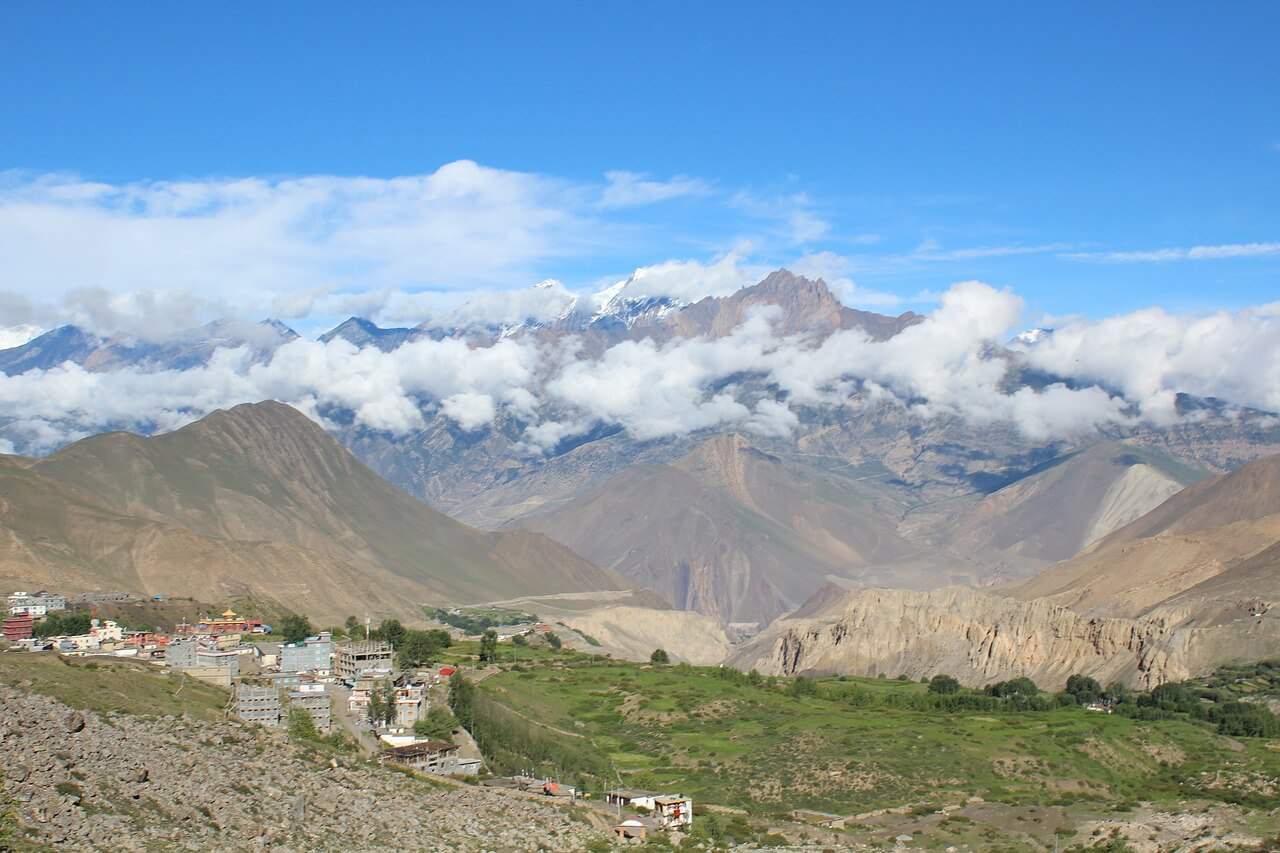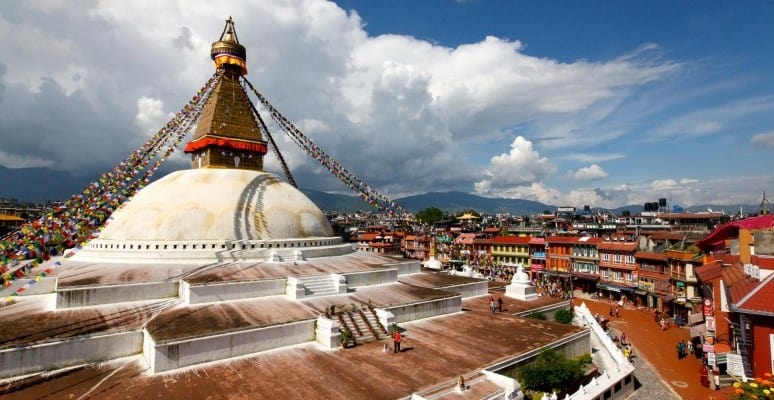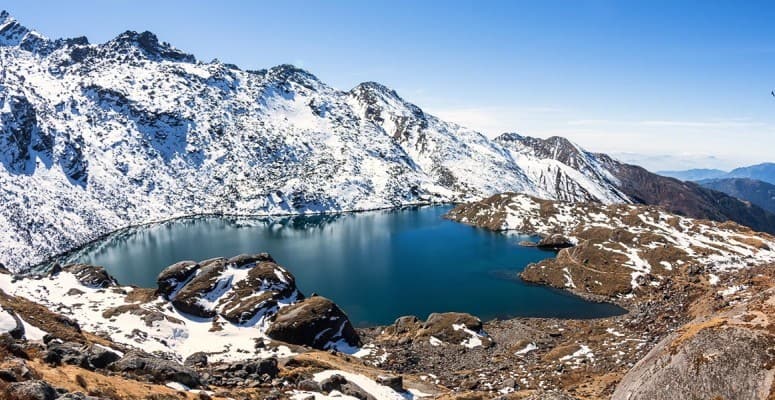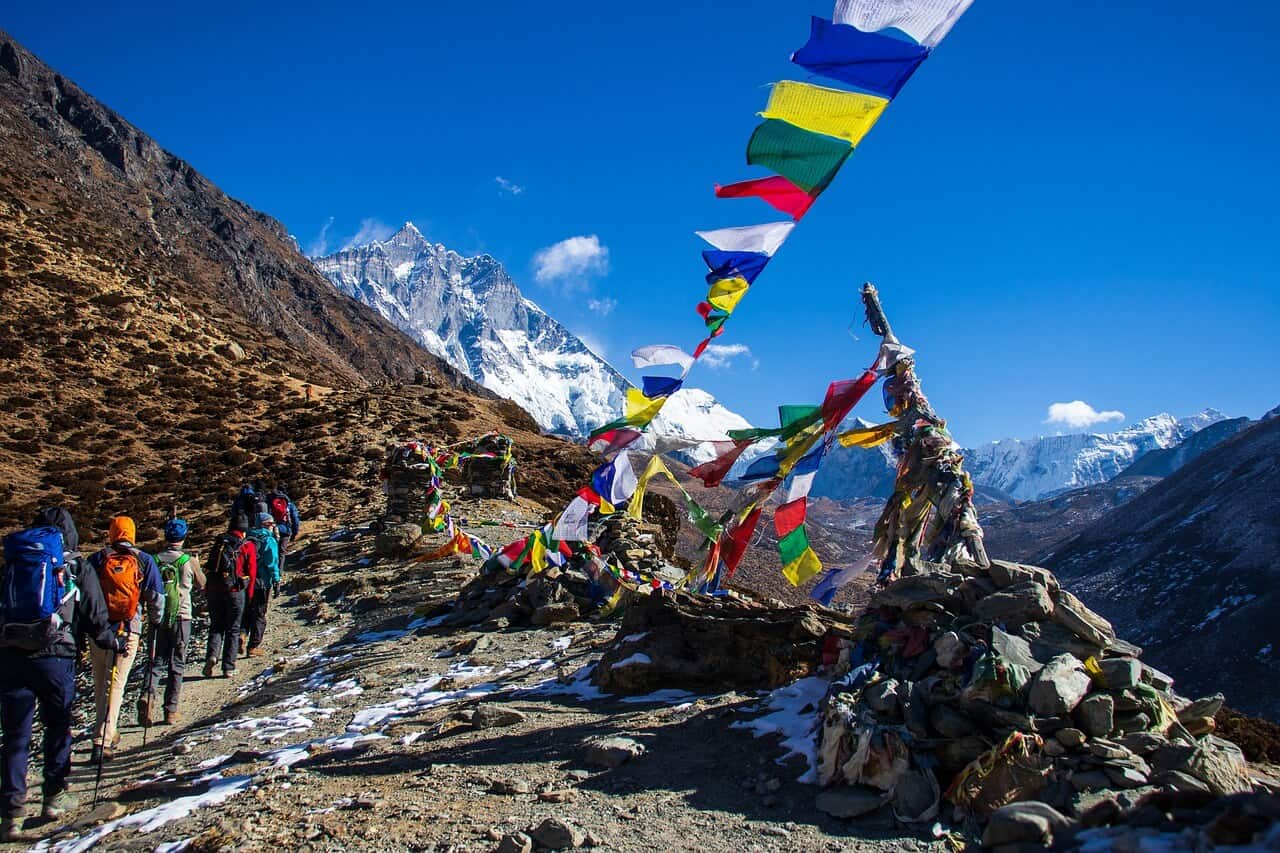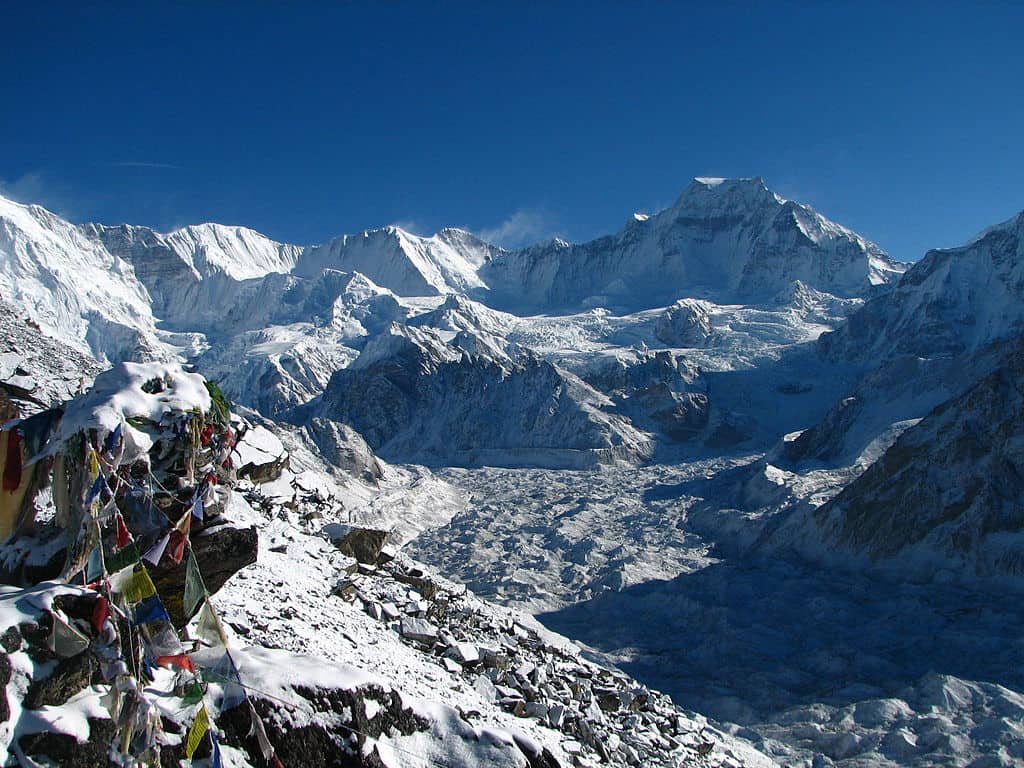Nepal is one of the most prominent destinations for trekking across the globe. The Himalayan range and the overall terrain of Nepal offer alluring landscapes that amaze you every moment you walk here.
Apart from the landscape, vibrant cultures of locals and their warm hospitality is an experience you will cherish for life. You will walk into foothills, ridges and rugged trails of the Himalaya.
Trekking in Nepal is a blend of natural and cultural exploration, and there are many trekking routes that you can complete in 5 days. These treks will take through the traditional remote villages in the Himalayas of Nepal. You get to explore diverse flora-fauna, waterfalls, rivers, and breathtaking scenery of the mighty Himalayan range.
As 8 out of 10 highest peaks in the world above 8,000 meters are in Nepal, trekking routes offer amazing mountainous views. From lower to higher elevation and from easy to moderate to arduous, these trekking trails of Nepal cater to individuals of all ages and skill levels.
You will have plenty of choices for trekking routes in almost every season of the year which is pretty fascinating. The following are some of the 5-days treks in Nepal.
Contents
Everest View Trek
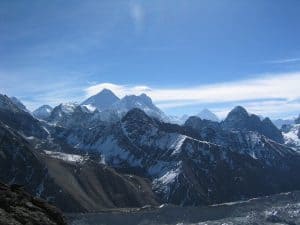
Everest View Trek is probably the most famous trek in the Himalayan region of Nepal. It is one of the most adventurous and historic trekking trails which presents you with the mesmerizing views of mighty Mt. Everest.
Everest region also encircles some other magnificent peaks like Mt. Lhotse, Mt. Cho Oyu, Mt. AmaDablam and Mt. Makalu. Namche bazaar is a gateway to the Everest region.
Trekking through the route, you will come across cascading waterfalls, rivers, and forests filled with rhododendron (National Flower of Nepal), pine trees, etc. You can also explore Sagarmatha National Park which is enlisted in the UNESCO World Natural Heritage. And there you will have the opportunity to witness the rare Red panda, Himalayan black bear, Moschus, Wild yak, etc.
Highlights of Everest View Trek
- Flight to Tenzing Hillary Airport at Lukla
- Magnificent views of the World’s tallest mountain, Mt. Everest
- Sacred site of the Everest region, Tengboche Monastery
- The culture, tradition, and heartwarming welcome of the Sherpas
- World’s highest-altitude hotel, Everest View Hotel
Trek facts
| Difficulty | Moderate |
| Maximum Elevation | 3,790 meters |
| Accommodation | Teahouses, Hotels |
| Best Months | February-May and September-November |
Outline Itinerary
| Day | Description | Altitude from
(meters) |
Altitude to
(meters) |
Trekking Duration |
| 1 | Fly to Lukla (2,860 meters) and trek to Phakding | 1,400 | 2,610 | 3-4 hours |
| 2 | Trek from Phakding to Namche Bazar | 2,610 | 3,440 | 5-6 hours |
| 3 | Visit Everest viewpoint and Khumjung village | 3,440 | 3,790 |
|
| 4 | Trek to Lukla | 3,790 | 2,860 | 7-8 hours |
| 5 | Fly from Lukla to Kathmandu | 2,860 | 1,400 |
|
Short Annapurna Base Camp Trek
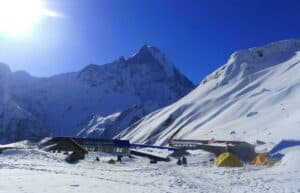
Short Annapurna Base Camp Trek is a popular trekking trail in the Himalaya region. About two-thirds of trekkers visiting Nepal choose ABC trail for their trekking experience. In one trip, you can visit two base camps (Machhapuchhre Base Camp and Annapurna Base Camp).
Annapurna region has diverse terrain and forests filled with rhododendrons, orchids, pines and fir trees. This region offers high altitude landscapes, waterfalls, closeup views of 7 and 8 Thousander Mt. Annapurna, Mt. Hiunchuli, Mt. Machhapuchhre, and Mt. Dhaulagiri. You can enjoy the hot springs at Jhinu Danda while descending.
Annapurna region has the highest trekking pass in the world and provides a 360-degree picturesque view of the world’s tallest mountains.
Highlights of Short Annapurna Base Camp Trek
- World’s deepest gorge, Kaligandaki Gorge
- Walk through Machhapuchhre Base Camp to reach Annapurna Base Camp
- Hot springs at Jhinu Danda
- Kali Gandaki and Marshyangdi river valley
- Magnificent views of snow-capped Annapurna range
Trek facts
| Difficulty | Moderate |
| Maximum Altitude | 4,130 meters |
| Accommodation | Teahouses, Lodges |
| Best Months | February-May, September-December |
Outline Itinerary
| Day | Description | Altitude from (Meters) | Altitude to (Meters) | Trekking Duration |
| 1 | Drive from Pokhara to Siwai and trek to Chhomrong | 900 | 2,170 | 6-7 hours walk |
| 2 | Trek from Chhomrong to Himalaya | 2,170 | 2,910 | 6-7 hours walk |
| 3 | Trek from Himalaya to ABC through MBC (3,700 meters) | 2,910 | 4,130 | 6-7 hours walk |
| 4 | Trek from ABC to Sinuwa | 4,130 | 2,100 | 6-7 hours
walk |
| 5 | Trek from Sinuwa to Siwai and drive to Pokhara | 2,100 | 900 | 2 hours walk + 3 hours drive |
Ghorepani Poonhill Trek
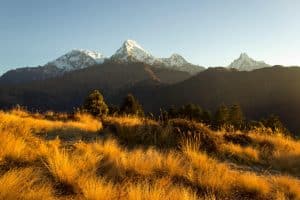
This trek gives you the best panoramic views of Annapurna range, Dhaulagiri range, Machhapuchhre, Hiunchuli, Nilgiri and Mardi Himal.
Ghorepani Poonhill Trek will take you through lush forests, photogenic views of mountains, colorful villages and rhododendron forests. You will also pass through Magar and Gurung settlements with terraced slopes and scenic paddy fields.
Poonhill Trek is an evergreen trekking course and has the best viewpoint. It will lead you to the staggeringly beautiful sunrise from a hilltop and where you can also have up-close views of snow-capped mountains.
The stunning Ghandruk village is home to the unique culture, tradition, and lifestyle of Gurung settlements. The village gives you majestic views of Annapurna with splendid sunrise and sunsets. You will ascend and descend through the famous stone stairs of Ulleri village.
Highlights of Ghorepani Poonhill Trek
- Sunrise and Sunsets from the hilltop
- Beautiful views of Annapurna, Machhapuchhre, Dhaulagiri, and Hiunchuli
- Ghandruk village and its culture and hospitality
- Famous stone stairs of Ulleri Village
- Cultural insights with the locals (Gurung and Magars)
Trek facts
| Difficulty | Easy |
| Maximum Altitude | 3,210 meters |
| Accommodation | Teahouse |
| Best Months | March-May, September-November |
Outline Itinerary
| Day | Description | Altitude from (Meters) | Altitude to
(Meters) |
Trekking Duration |
| 1 | Drive from Pokhara to Nayapul (1,070 meters) and trek to Tikhedhunga | 900 | 1,530 | 4-5 hours walk + 1.5 hours drive |
| 2 | Trek to Ghorepani | 1,530 | 2,850 | 5-6 hours walk |
| 3 | Hike from Ghorepani to Poon Hill (3,210 meters) and trek to Ghandruk | 2,850 | 1,950 | 5-6 hours walk |
| 4 | Trek to Nayapul and drive to Pokhara | 1,950 | 900 | 3 hours walk + 1.5 hours drive |
| 5 | Fly back to Kathmandu | 900 | 1,400 |
|
Mardi Himal Trek
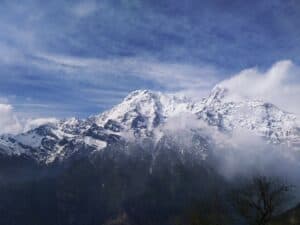
Mardi Himal is another trek in the Annapurna region which has relatively less crowded so that you can relax and enjoy yourself in a peaceful environment. You will be blown away by the crystal clear scenery of Annapurna range, Dhaulagiri range, Manaslu range and Mt. Machhapuchhre (Mt. Fishtail).
You can explore the hidden landscapes of Annapurna along with the glacial valley. This trek is a moderate one in terms of difficulty.
Local homestays and lodges will accommodate you throughout the trek. You can explore the culture and traditional lifestyle of Gurungs with sound hospitality.
You will walk through greenery vegetation and terraced farmland and pass through rhododendron, magnolia, pine, and oak forest on the trail.
Highlights of Mardi Himal Trek
- Dazzling glacial valley
- Explore the culture and lifestyle of Gurungs
- Witness crystal clear scenery of Annapurna, Dhaulagiri range and Mt. Fishtail
- Mardi base camp and high camp exploration
- Amazing scenery of mountain range
Trek facts
| Difficulty | Moderate to Hard |
| Maximum Altitude | 3,580 meters |
| Accommodation | Teahouses, Lodge/Homestay |
| Best Months | March-May, September-November |
Outline Itinerary
| Day | Description | Altitude from (Meters) | Altitude to (Meters) | Trekking Duration |
| 1 | Drive to Kande and trek to Deurali/Pothana | 1,400 | 2,125 | 3-4 hours walk |
| 2 | Trek to Low Camp | 2,125 | 3,150 | 3-4 hours walk |
| 3 | Trek to High Camp | 3,150 | 3,580 | 5-6 hours walk |
| 4 | Hike to the Mardi Base Camp and trek down to Siding | 3,580 | 1,885 | 12-13 hours walk |
| 5 | Trek to Lumre and drive to Pokhara | 1,885 | 900 | 3 hours walk + 1-hour drive |
Gosaikunda Trek
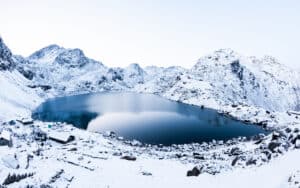
Gosaikunda Trek is famous for Gosaikunda lake situated at an altitude of 4,380 meters. Gosaikunda is often regarded as the holiest lake by Hindus. It is a religious and pilgrimage site for both Hindus and Buddhists.
The trek begins after an hour’s drive from Kathmandu to Sundarijal. From here, you on the trail exploring amazing Tamang culture with sound hospitality. You will walk through Langtang National Park with forests of pine, oak and birch trees, and diverse flora and fauna.
Gosaikunda lake is also known as the frozen lake of the Langtang region. People religiously believe that once you take a dip in Gosaikunda lake, all your pain and sins will be washed.
Highlights of Gosaikunda Trek
- A natural and cultural exploration of the Langtang valley
- A holy place for Hindus and Buddhists
- Astonishing views of mountain peaks
- Chance to spot snow leopard, musk deer, and Himalayan Tahr
- 108 lakes in the area
Trek facts
| Difficulty | Moderate |
| Maximum Altitude | 4,380 meters |
| Accommodation | Lodges and tea houses |
| Best Months | April-June, August-October |
Outline Itinerary
| Day | Description | Altitude from (Meters) | Altitude to (Meters) | Trekking Duration |
| 1 | Drive to Dhunche | 1,400 | 2,000 | 6 hours drive |
| 2 | Trek to Chandanwari | 2,000 | 3,580 | 4-5 hours walk |
| 3 | Trek to Gosaikunda | 3,580 | 4,380 | 5-7 hours walk |
| 4 | Trek back to Dhunche | 4,380 | 2,000 | 11-12 hours |
| 5 | Drive from Dhunche to Kathmandu | 2,000 | 1,400 | 6 hours drive |
Helambu Trek
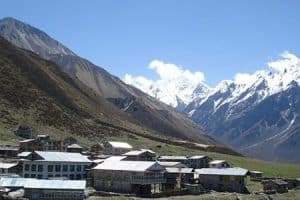
Helambu Trek is rich in natural beauty with the fascinating culture of Tamang and Sherpa community. This trek takes you through green lush forests, farmlands, and villages. It is less crowded and free of noise and air pollution.
Tharepati pass is the highest point of the trek. You will witness spectacular views of Mt. Langtang, Mt. Manaslu, Ganesh Himal, Rolwaling, Gauri Shankar, Dorje Lakpa, Langsisa and distant views of mountains in the Everest region.
You can explore mountains, rivers, waterfalls, glaciers, forests and grassy meadows on your trail. You will get a close insight into the culture and rural lifestyle of Tamang and Sherpa communities.
Helambu is the nearest trekking trail from Kathmandu so it’s easily accessible for those with a short holiday schedule. You will trek through Shivapuri ridge with eye-catching views of the Himalayas.
Helambu trail takes you across Langtang National Park and Shivapuri Wildlife Reserve which house rare species of flora fauna, exotic orchids, and birds. Helambu region is the nearest place from Kathmandu where you can experience Sherpa culture.
Highlights of Helambu Trek
- Spectacular views of Mt. Langtang, Mt. Manaslu, and Ganesh Himal
- Trek through Shivapuri ridge with views of Central Himalaya
- If you get lucky, you will spot the rare Red panda
- You can explore Shivapuri and Langtang National Park
Trek facts
| Difficulty | Moderate |
| Maximum Altitude | 3,597 meters |
| Accommodation | Teahouse |
| Best Months | February-Jun, September-November |
Outline Itinerary
| Day | Description | Altitude from (Meters) | Altitude to (Meters) | Trekking Duration |
| 1 | Trek to Chisapani | 1,400 | 2,300 | 5 hours walk |
| 2 | Trek to Kutumsang | 2,300 | 2,446 | 6 hours walk |
| 3 | Trek to Tharepati | 2,446 | 3,597 | 6 hours walk |
| 4 | Trek to Tarke Gyang | 3,597 | 2,743 | 7 hours walk |
| 5 | Trek to Timbu and drive to Kathmandu | 2,743 | 1,400 | 3 hours walk + 4 hours drive |
Sarangkot Dhampus Trek

Sarangkot Dhampus Trek is one of the best short treks you can go from Pokhara. There are the 3 most popular viewpoints (Sarangkot, Dhampus, and Naudanda) in this trek. These viewpoints will bestow you with the great views that the Pokhara valley and snow-covered mountains have to offer.
You will see Annapurna South, Mt. Machhapuchhre, Mt. Dhaulagiri, Mt. Hiunchuli, Mt. Lamjung and other Himalayan wonders from Dhampus village.
From the Naudanda hill, you can get clear views of Phewa lake. In terms of difficulty, this trek is an easy one. So it can cater to all individuals and as it is short in duration, you can satisfy your desire for trekking within a few days.
Highlights of Sarangkot Dhampus Trek
- Low altitude trek, yet awe-inspiring views of Himalayas
- A short trek from Pokhara valley
- 360-degree panoramic views of Mt. Annapurna South, Mt. Machhapuchhre, Mt. Hiunchuli, and Mt. Lamjung
- Close view of Pokhara valley and Mt. Fishtail from the top of Naudanda hill
- Extraordinary sunrise views from Sarangkot
Trek facts
| Difficulty | Easy |
| Maximum Altitude | 1,770 meters |
| Accommodation | Hotel/Lodge |
| Best Months | All months |
Outline Itinerary
| Day | Description | Altitude from (Meter) | Altitude to (Meter) | Trekking Duration |
| 1 | Kathmandu to Pokhara | 1,400 | 900 | 5 hours drive |
| 2 | Pokhara to Sarangkot | 900 | 1,600 | 4 hours walk |
| 3 | Sarangkot to Dhampus | 1,600 | 1,770 | 5 hours walk |
| 4 | Dhampus to Pokhara | 1,770 | 900 | 3 hours walk |
| 5 | Pokhara to Kathmandu | 900 | 1,400 | 4-5 hours drive |
Lower Mustang Trek
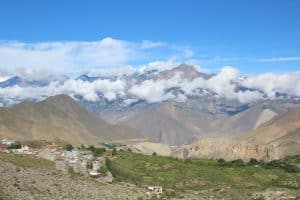
A trek to Lower Mustang will give you a glimpse of a different aspect of Nepal. Inhabited by Lamas and Buddhists, Lower Mustang is also known as ‘Lost Tibetan Kingdom’. You can experience the stark desert landscape of Mustang in this trek.
The trek begins from Pokhara. You can either take a 20-minute flight to Jomsom or choose a 10-hour long trip by bus or jeep. Both ways, you will stop at Jomsom from where you trek to Kagbeni, the gateway to Upper Mustang.
You get to explore the stunning villages influenced by Tibetan culture and architecture. You can also visit the Red monastery and the holy site of Muktinath which is sacred to both Hindus and Buddhists, located at an altitude of 3,710 meters.
Highlights of Lower Mustang Trek
- This trek starts from The City of Lakes, Pokhara.
- Muktinath Temple, a Holy place for Hindus and Buddhists.
- Tibet-influenced culture and architecture
- Stark desert landscape
- Witness the Deepest gorge of the World, Kaligandaki Gorge.
Trek facts
| Difficulty | Easy |
| Accommodation | Hotel/Lodge |
| Maximum Altitude | 3,710 meters |
| Best Months | March-May, October-November |
Outline Itinerary
| Day | Description | Altitude from (Meters) | Altitude to (Meters) | Trekking Duration |
| 1 | Fly from Pokhara to Jomsom (2,743 meters) and trek to Kagbeni | 900 | 2,804 | 30 minutes flight + 3-4 hours walk |
| 2 | Trek to Jharkot, Visit Red Gompa | 2,804 | 3,520 | 4 hours of walk |
| 3 | Day trip to Muktinath | 3,520 | 3,710 |
|
| 4 | Trek to Jomsom via Lupra valley | 3,710 | 2,743 |
|
| 5 | Flight from Jomsom to Pokhara | 2,743 | 1,400 | 30 minutes of flight |
Best time to trek in Nepal
Nepal has a wide climatic variation due to its diverse geographical topography. Trekking in Nepal is possible throughout the year and all the season offers you their own unique attractions. However, autumn and spring are considered as the best season for trekking in Nepal.
Autumn (September-November)
Autumn is the best season that presents you crystal-clear views of the sky, awe-inspiring landscapes and dazzling mountains that Nepal has to offer. Autumn brings out the best of your trekking experience in Nepal. The trail conditions are warmer with the bright sun. Clear blue skies last till dusk which will make your walk joyful and pollution is washed away by Monsoon. In autumn, however, there is one demerit for the trekkers. Being the most favorable season, the trail is heavily crowded by the trekkers.
Spring Season (March-May)
Spring is also considered another best trekking season after autumn. Spring signals the beginning of the peak trekking season. In this season, you can enjoy the blooming flowers throughout your trek and will experience the vibrant foliage of rhododendron forests above 3,000 meters. This season is also conducive for spectacular views of mountains, clear blue skies, and better trail conditions. The temperature at both the lower and higher elevations are quite moderate and tolerable during spring.
Winter Season (December-February)
In winter, though the sky is clear, it gets very cold at night which may be unbearable for many. Crossing and climbing high passes might get difficult too, owing to the cold weather. However, if you still want to trek in winter, you might want to trek at a lower elevation. Otherwise, you might get into trouble passing through high elevations because of snowfall and wind.
Summer Season (June-August)
Summer season, despite being warm, is not the best time for trekking in Nepal. Trekkers usually do not choose this season as it does not provide clear views of mountains and landscapes due to the cloudy sky. Trail condition in summer is way worse than other seasons due to continuous rain. The routes are slippery and wet and leech infestation is very common.
The following table shows the average temperature and precipitation of some of the destinations for short treks in Nepal:
| Location | Average Minimum Temperature (C) | Average Maximum Temperature (C) | Annual Rainfall (mm) | Elevation (meters) |
| Namche Bazar | – o.8 | 11.7 | 1,110 | 3,440 |
| Pokhara | 13.1 | 25.3 | 3,274 | 900 |
| Kathmandu | 9.1 | 21.7 | 1,505 | 1,400 |
| Dhampus | 9.3 | 20.5 | 3,916 | 1,650 |
| Lukla | 2.8 | 14.7 | 1,838 | 2,860 |
| Mustang | 2.6 | 27.7 | 856 | 2,500 |
| Ghandruk | 7 | 18.8 | 2,747 | 2,012 |
| Langtang | -0.6 | 12.1 | 689 | 4,773 |
Accommodation and Food
For accommodation, there are plenty of teahouses on the trail of popular treks in Nepal. In the past, teahouses only used to offer a cup of tea to travelers who stop there to rest. As travelers increased by in the mountainous region, they began to provide meals and accommodations and other basic facilities to trekkers.
These teahouses provide you with a twin or triple sharing bedroom. In the peak seasons, the trails are crowded and you might not get a room and might have to sleep in the dining hall.
Some teahouses do not provide charging facilities so make sure you bring your charger and power bank. You can order food from a simple menu in some teahouses. But usually, Dal Bhat is the most served meal. It is the staple Nepali food served with rice, pickles, vegetables, lentil soup, etc.
In a few teahouses, you might even find an attached bathroom with a hot shower but not everywhere. Make sure your package includes proper accommodation and fooding.
Packing list for trekking in Nepal
Packing depends on what season you are planning to trek in Nepal. If it’s monsoon, you need to pack more but if it’s autumn and spring, you are going to need comparatively fewer gear.
The following a list of things you should pack for trekking in Nepal.
Trekking Wearables
- Trekking shirts
- Trekking trousers
- Hiking boots
- Trekking socks
- Gloves
- Long-sleeved shirt
- Padded jacket
- Waterproof shell jacket
- Light Fleece
Important Accessories
- Headlamp
- Charger
- Camera
- Water bottle
- Water purifier
- Universal Adapter
- Charger
- Extra batteries
- Sunglasses
Personal Supplies
- Sunscreen
- Hand sanitizer
- Toiletries
- Lip balm
- Basic medical kits
- Towels
Guided or Independent: How to trek in Nepal?
Guided Trek
If you’re unfamiliar with the trekking conditions in Nepal, we highly recommend you to hire a guide. The guide will take care of your itinerary, food, accommodation, transportation and handle all the emergencies that might occur on the trails. Your guide will explain to you about the local places and people, their culture and the regional flora-fauna.
The following are the pros and cons of trekking with a guide:
| Pros | Cons |
| A guide will keep you safe | Guided trek could be less adventurous |
| More insight of the places | No flexibility on your trip |
| No need to worry about logistics | Expensive |
Independent Trek
Independent Trek might be an ideal option for you if you are an experienced trekker and are well aware of trekking conditions. If you want to experience more freedom and take care of all the logistics such as permits, itinerary, food, accommodation by yourself, the independent trek is for you.
Make sure that you are well aware of trail conditions and the culture of the locals. It will help you to deal with any unforeseeable situations that might occur on your trek.
| Pros | Cons |
| Freedom to explore and more adventurous | It requires more time and energy |
| Flexibility of changing your itinerary | You may feel lonely and isolated |
| Cheaper than guided trek | Trek might be strenuous so it’s risky and unsafe |
Insurance for the Trek
Whether it’s for long treks or short treks, having travel insurance is a must. As short treks seem relatively easy and comfortable than long treks, some may fail to care about travel insurance. Be aware if you get sick or you miss your flight, lose your luggage, only you will be accountable for that.
So make sure your travel insurance covers all unpredicted expenses such as trip cancellation, travel medical insurance, luggage loss, flight cancellation, theft, etc. it is essential as while trekking in the Himalayas of Nepal, you might get yourself into some unpredictable circumstances.
Useful Tips for Trekking in Nepal
Before planning the trip, there are certain things you should consider. It may concern your health status, like how much heat and cold you can endure, how high you can go up in the mountains. Also, you need to have some information regarding the place you are trekking to, like altitude, weather, etc.
In general, here are some Trekking Tips you might not want to miss.
- Travel Insurance is a must.
- Do some cardio exercise weeks before your trek.
- Make sure you have entry permits beforehand.
- Drink plenty of fluids so you stay hydrated.
- Bring local currency with you.
- Do research about your treks and get familiar with local people you may encounter along the journey.
- Choose a trek that suits your health
FAQs
1. How fit do I need to be to go on short treks in Nepal?
Let’s be practical here, when altitude gets higher there will be less oxygen in the air for your body to absorb. To adapt to it, you need to work on your cardiovascular endurance by doing some exercise that will escalate your stamina. You need to start jogging at least one hour per day weeks before your trek.
During your trek, while climbing uphill and descending, more impact will be on your legs. You need to strengthen your legs by doing stretching exercises which will keep your muscles loose and your body flexible.
You may also feel discomfort on your shoulder because of the long walks, so you need to do some shoulder rotation exercise which will ease your shoulder.
2. Do I have to hire a guide or porter for the short treks?
Well, it depends on you. If you are a novice trekker, hiring a guide or porter to help you reach your destination is a reliable and comfortable option. As they are familiar with every trekking situation, they manage and organize your trip. They act as a medium with the locals and help you out in any emergencies. So we highly recommend you hire a guide or/and a porter.
3. Is the drinking water safe on the trek?
Local streams and tap water might not be suitable for drinking. So make sure to bring a water bottle and water purifier so that you can purify water before drinking.
4. Is there any risk of Acute Mountain Sickness (AMS)?
Acute Mountain Sickness usually occurs above the elevation of 3,000 meters. Some of these listed short treks include places with such elevations, so there is some possibility that you may suffer from AMS. To avoid it, you should acclimatize properly and walk at your own pace. Also, make sure you drink plenty of fluids so that you stay hydrated.
5. Do I need travel insurance for short treks?
Travel insurance for short treks is essential. Although the short treks are relatively easier than long treks, you should always be prepared for unforeseeable situations that may occur in your trek. It’s better not to regret it later than being accountable for all of your unforeseen expenses that might occur on your trek.
Conclusion
Nepal has diverse geographical topography so it offers numerous trekking trails, from a lower elevation to higher and from easy to strenuous treks. You have the privilege to choose one that suits you the most. You can trek in Nepal every season of the year. With the mighty Himalayas ranging over the diverse trails, trekking in Nepal could be a dream come true for every avid trekker. Nepal is indeed a paradise for every trekker and explorer, and these 5-days treks will definitely give you memories that you will cherish throughout your life.

